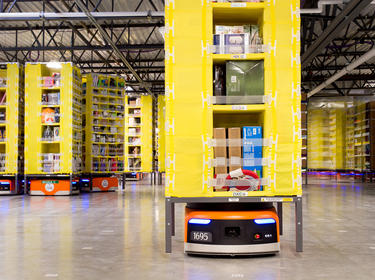
Integrative Software Fuels Warehouse Capabilities
Of all the trends, software and technology arguably impact the capabilities of warehouses the most. One of the biggest tech trends of 2019 was the implementation of machine learning systems. Thanks to machine learning, a warehouse management system can now detect potential problems and adjust allocation accordingly without human intervention. This all happens in real time, thus improving the warehouse’s productivity and efficiency.
Another recent integrative software innovation that made an impact was intelligent waving/batch picking. With this technology, a warehouse can meet the fulfillment needs of the fast-paced e-commerce space with the ability to interject rush orders while pushing out a wave.
Voice-tasking capabilities became more common in the warehouse industry in 2019. Smart assistants, such as Amazon’s Alexa and Apple’s Siri, found their way into a wide range of connected devices. The warehouse industry uses the same type of voice-driven interface to manage its workflow. Voice-controlled mobile devices now offer hands-free operation for a variety of common shipping functions, including picking and packing.






